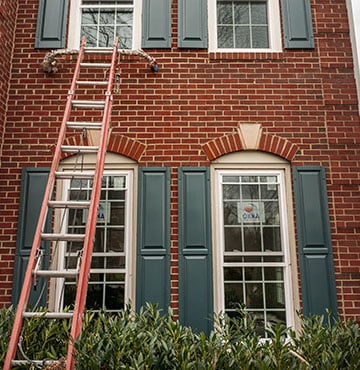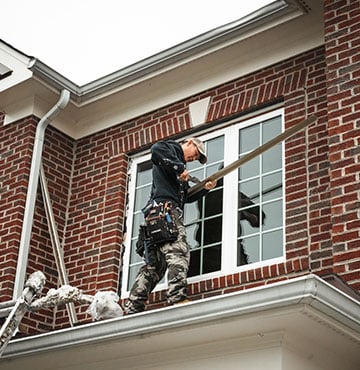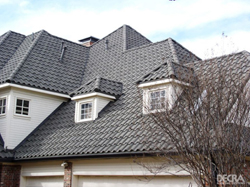 When it comes time for a replacement roof, homeowners face many options. The choices of roofing material can be confusing. Picking the right one depends on different factors. The homeowner’s budget certainly has a role to play. Climate, building codes, HOA restrictions and aesthetics are considerations as well. The key to selecting a roofing type is knowledge. Homeowners must understand the pros and cons of each material to know what will work for their home and budget.
When it comes time for a replacement roof, homeowners face many options. The choices of roofing material can be confusing. Picking the right one depends on different factors. The homeowner’s budget certainly has a role to play. Climate, building codes, HOA restrictions and aesthetics are considerations as well. The key to selecting a roofing type is knowledge. Homeowners must understand the pros and cons of each material to know what will work for their home and budget.
Roofing Possibilities
- Asphalt shingles
- Recycled steel panels
- Standing seam metal
- Cedar shingles
Each style comes with benefits and drawbacks. Examining the systems separately will dispel some of the mystery.
Asphalt Shingles
Asphalt shingles are a popular choice because they are inexpensive. There are two common types of shingles made with asphalt: organic and glass fiber.
Organic – Organic asphalt shingles are an environmentally friendly option for a replacement roof that is also cost-effective. Manufacturers use recycled paper combined with asphalt and ceramic granules. Recycling reduces the amount of paper waste in landfills.
Glass fiber or fiberglass – Glass fiber shingles contain a reinforcement layer made with urea-formaldehyde resin and fiberglass. This combination gives the shingles resilience. Glass fiber shingles are more fire resistant than their organic counterparts.
Considerations:
- Climate is a factor when considering asphalt shingles. Asphalt tends to last longer in areas where the climate is consistent. Sudden temperature changes may damage the material.
- Re-roofing with asphalt shingles should be done when the temperature is over 50 degrees F. This allows each shingle to bond to the underlying layer. Cold temperatures interfere with proper application.
- Asphalt Shingles come in grades. The higher the grade, the longer the shingle will last. Higher ratings mean more cost, but increased durability. With shingles, homeowners must consider algae growth and moss. This is not a factor in metal roofs. Fire is another issue with both asphalt and cedar shingles. Look for treated material that is fire resistant.
Recycled Steel Panels
Recycled steel is another way homeowners can help the environment when installing a replacement roof. Steel roofing systems use at least 25 percent recycled metal to create each panel.
Considerations:
- By using recycled material, manufacturers reduce the impact on the environment, as well as keep costs down.
- Metal roofing is an optimal choice for areas that endure extreme weather.
Standing Seam Metal Roofs
For locations that need a strong, durable roof, standing seam metal offers a solution. The material consists of interlocking panels that crimp together after installation. This crimping process helps create a strong, water-resistant roof.
Considerations:
- Seams run from the top of the roof vertically down to the edge. This stimulates efficient water run off.
- The seam design lets metal flex with the temperature changes. This means a standing seam metal roof is ideal for areas that have a multidimensional climate.
- Metal options including recycled steel panels are high quality that last as long as 50 years. The appearance is different from the traditional roof, however. Opting for a metal product allows for complementary designs. A homeowner that is looking to rehab the entire exterior of the house can choose matching siding to complement the roof.
Cedar Shingles
A cedar shingle, or shake, gives the home a historic and rustic appearance. In the colonial days, shingles were always made from seam split wood. Modern day manufacturing includes either sawn or split processing.
Considerations:
- Cedar shingles tends to be more expensive than other forms, because they rely on a natural resource.
- The cedar shingles tend to need more maintenance throughout the life of the roof and will not last as long as other materials.
- Manufacturers often treat the wood to make it more durable for certain areas with extreme weather.
Making a Choice
There is no set standard for choosing roofing material, because there are too many variables to consider. Our roofing materials last up to 50 years, so one of the primary decision making criteria is the aesthetics of the roofing material. Asphalt shingles are more common than other formats. Taking a walk around the neighborhood is a productive way to see what other homeowners have selected - are they all standard asphalt or are there any individual, eclectic styles like standing seam or metal systems?
Some factors to keep in mind when choosing a roofing material include:
- Weather
- Temperature changes
- Cost
- Appearance
- Durability
A replacement roof is an investment that improves the look of a home, increases the efficiency and adds value to the property. Selecting the right material is a vital step in the process, and we hope that this summary helps you navigate through the many options.
The experts at Windows on Washington are happy to answer any questions you may have about roofing material. In addition, they can assess the current condition of your roof, provide estimates and advice on the different styles available, and walk through our comprehensive warranty.















%20(720%20%C3%97%20510%20px)%20(500%20%C3%97%20500%20px)%20(300%20%C3%97%20300%20px)%20(400%20%C3%97%20400%20px)%20(700%20%C3%97%20700%20px)%20(480%20x%20550%20px).png?width=480&height=550&name=Untitled%20(860%20%C3%97%20860%20px)%20(720%20%C3%97%20510%20px)%20(500%20%C3%97%20500%20px)%20(300%20%C3%97%20300%20px)%20(400%20%C3%97%20400%20px)%20(700%20%C3%97%20700%20px)%20(480%20x%20550%20px).png)

Comments